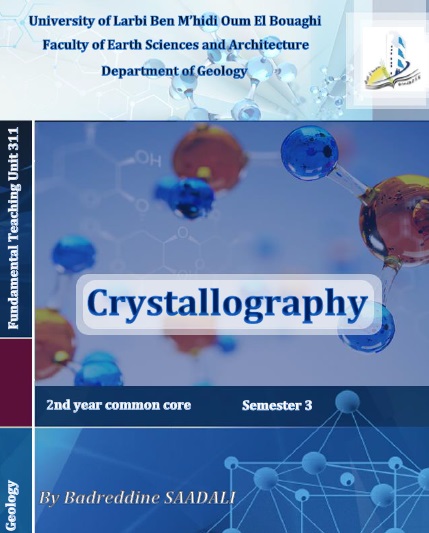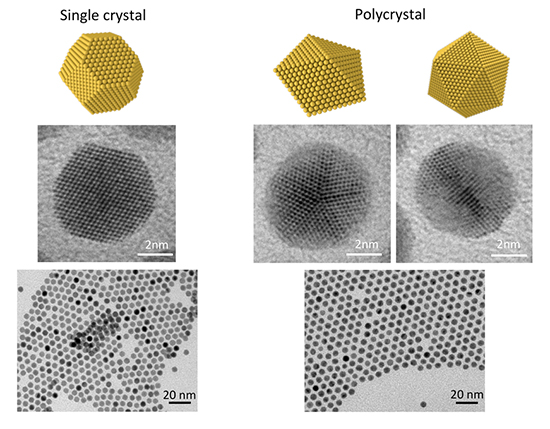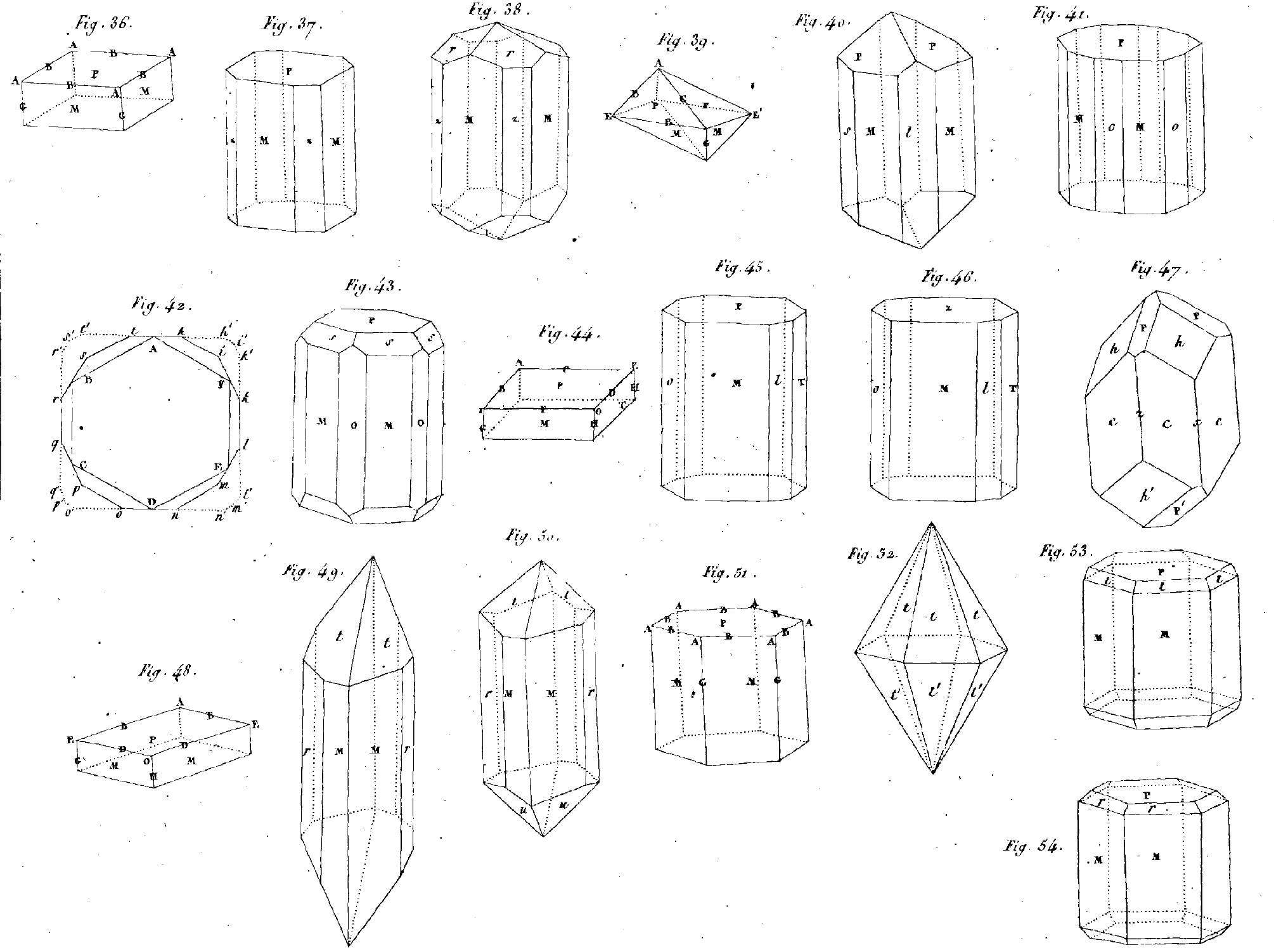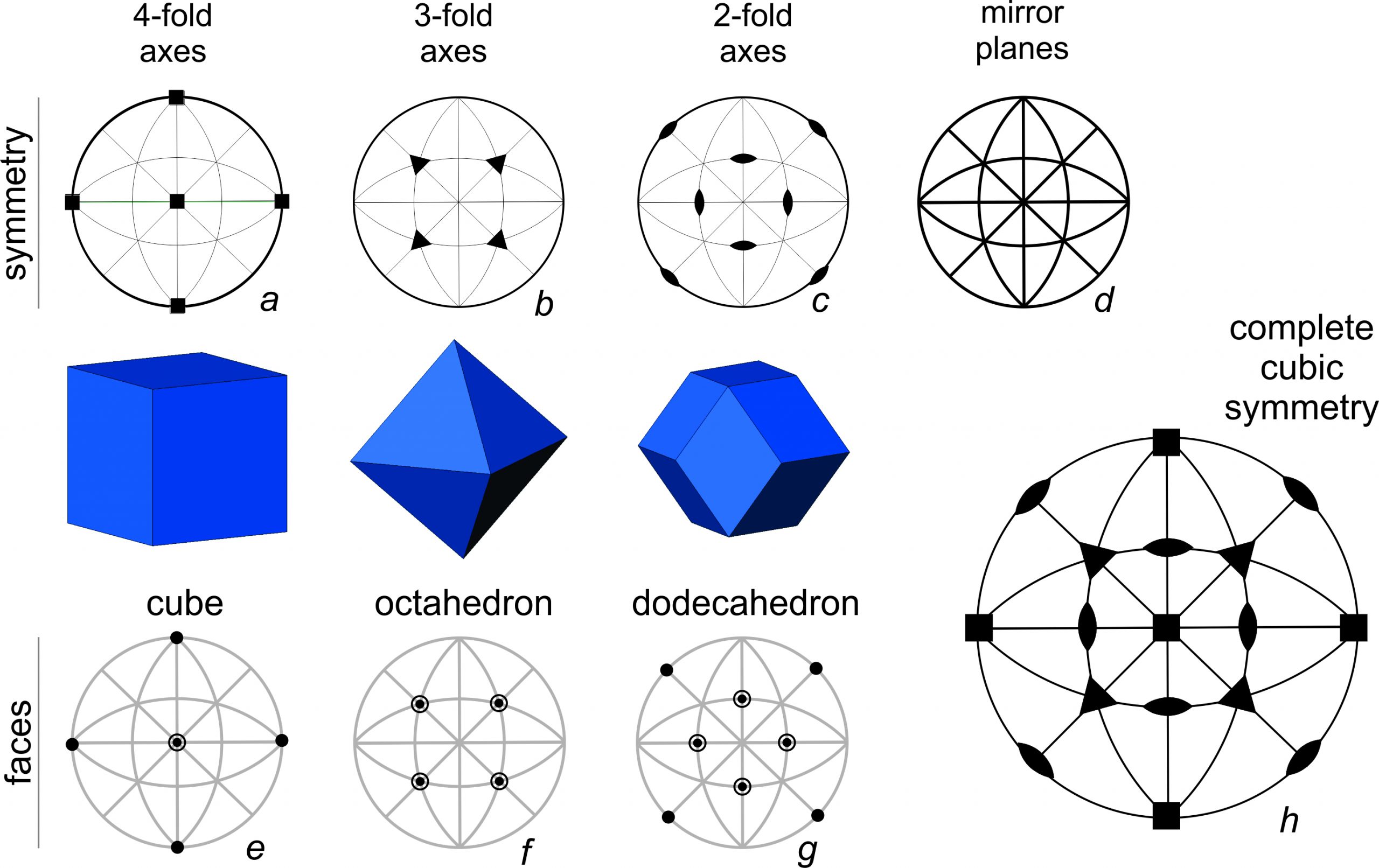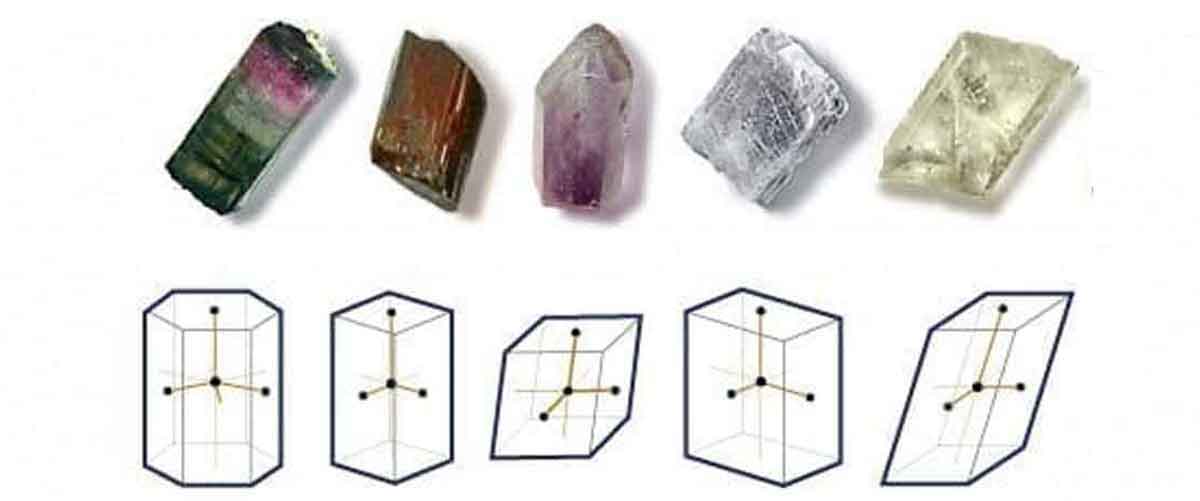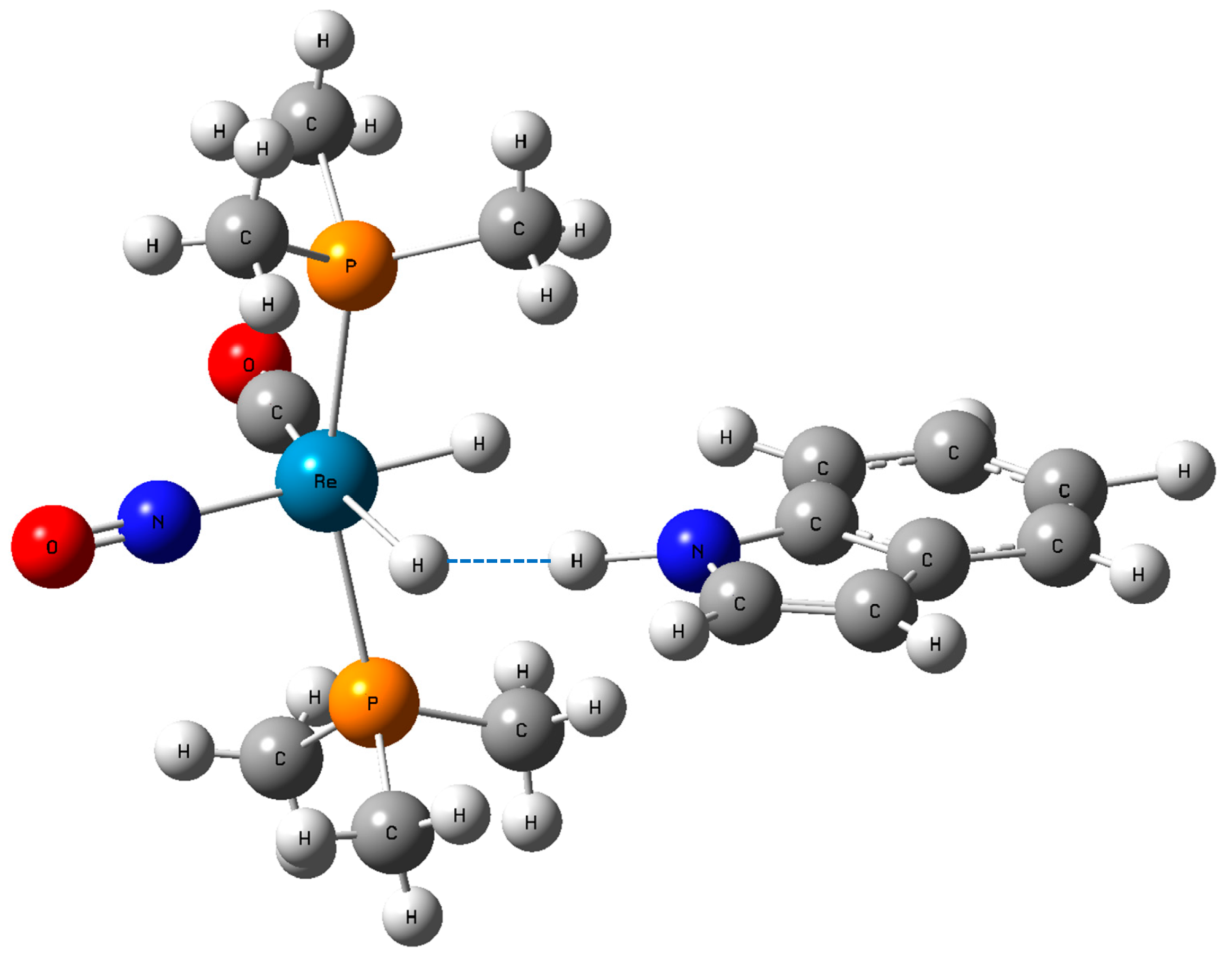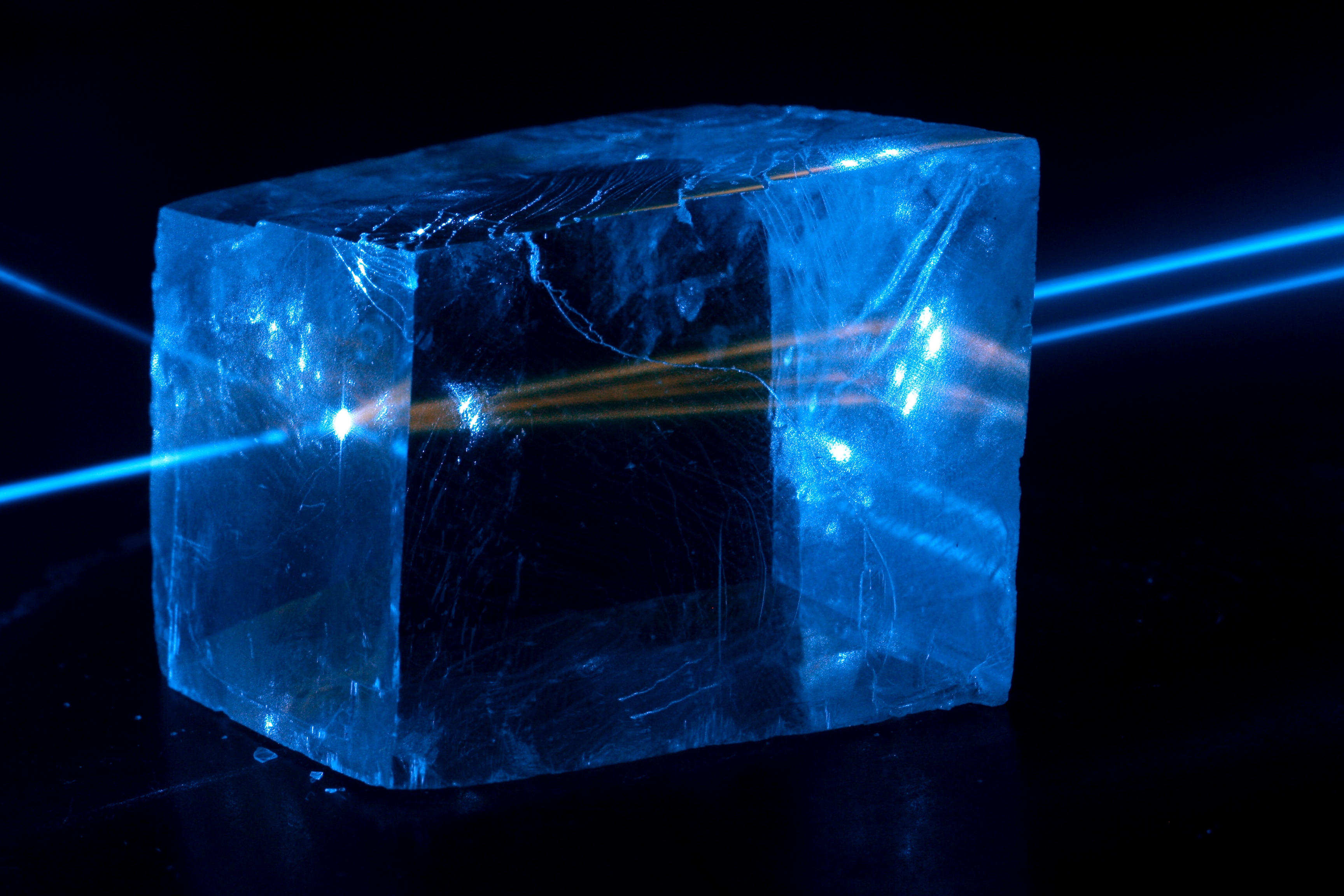Home Page
Preface All solids, whether natural or artificial, that surround us originate from a well-arranged microscopic component called a crystal. The growth, synthesis, and maintenance of crystalline matter are intrinsically linked to the atoms that compose it. Their orderly arrangement results from the laws governing their stability, as well as the physical and chemical properties that distinguish crystals from one another. The science that deals with everything related to crystals is called crystallography. Numerous fields are interested in the study of crystals, including inorganic and organic chemistry, physics, geology, metallurgy, biology, and medicine. This highlights the importance of studying crystals in our daily lives, as nearly all our products and raw materials are crystalline. For example, rocks are composed of minerals, while minerals are formed from an assembly of crystals, which are made up of atoms (motifs) organized into geometric systems called lattice networks.
Mineralogy, the science that studies minerals, relies heavily on crystallography, as certain properties of minerals are linked to the formation of crystals in their deposition environment. Students are expected to understand all crystal systems, their geometry, symmetry elements, and the various modes and classes to which they belong. They must also grasp the fundamental concepts of crystallography, which are taught in the first year of geology.
The first part of the course, titled Geometric Crystallography, focuses on explaining the fundamental concepts of crystallography, such as laws, crystal structures, and their components (lattice and motif), as well as the different bonds formed. It also interprets the notion of symmetry, classes, and associated operations and describes certain properties related to the arrangement of atoms and molecules within a three-dimensional unit cell. The second part, titled Crystal Optics, interprets the instrumentation used for observing and measuring crystals, such as X-ray diffraction and emphasizes understanding the interaction of light with crystalline bodies.Objectives Understand Crystal Systems, where students should be able to identify and describe all crystal systems, their geometry, and their symmetry elements. Also, students should interpret symmetry operations, crystal classes, and their applications in crystallography
Master Fundamental Concepts, so students must grasp the basic principles of crystallography, including lattice structures, motifs, and atomic arrangements and help to understand the physical and chemical properties of crystals and how they relate to atomic arrangements.- All solids, natural or artificial, that are present around us, are at the origin of a well-arranged elementary microscopic component called a crystal.
